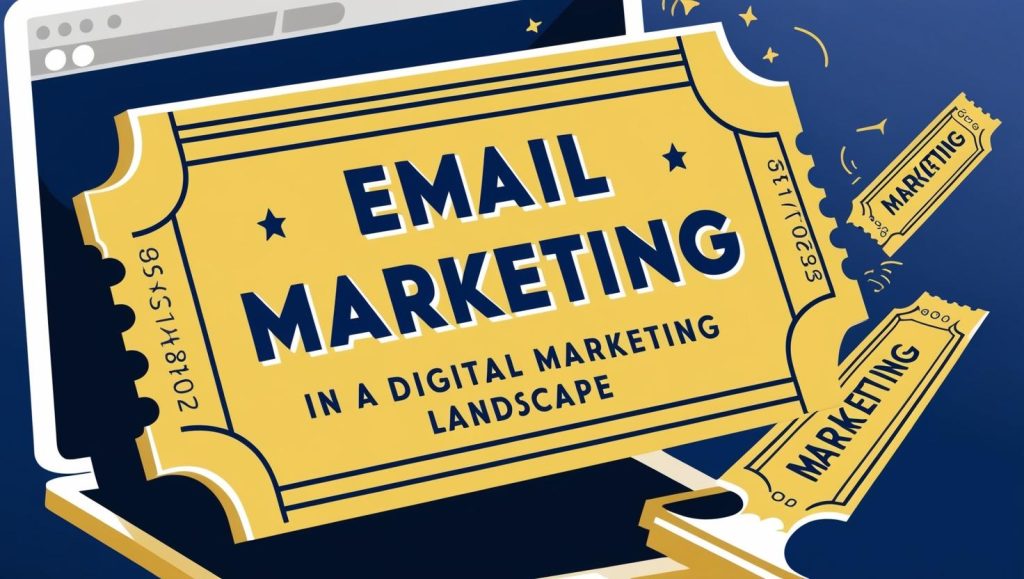Why Email Marketing is the Golden Ticket in Digital Marketing
Unlocking the Power of Email Campaigns: The Secret Sauce for Building Connections and Driving Success

Introduction
In a fast-paced digital world, where trends come and go, email marketing stands the test of time as one of the most reliable and effective marketing strategies. Did you know that for every $1 spent on email marketing, businesses see an average ROI of $42?
Email marketing isn’t just cost-effective; it also enables businesses to build connections, personalize outreach, and track measurable results. Whether you’re a small startup or a global brand, this blog will guide you through the benefits, strategies, and key statistics of email campaigns to help you succeed.
Table of Contents
- Why Are Email Campaigns Important?
- Top Benefits of Email Marketing
- Cost-Effectiveness
- Personalization and Segmentation
- Measurable Results
- Key Statistics on Email Marketing Effectiveness
- Conclusion
- FAQs
- Call-to-Action (CTA)
Why Are Email Campaigns Important?
Why it matters: Email campaigns allow businesses to send targeted, personalized messages directly to their audience. This level of connection makes email one of the most effective marketing tools for driving engagement and sales.
Key Points:
- Boosts brand awareness through regular, value-driven communication.
- Drives lead generation and conversions with targeted promotions and content.
- Facilitates one-on-one engagement, creating a personal connection with the audience.
Example:
A small fashion retailer sends personalized product recommendations to customers based on their past purchases. This targeted approach leads to increased repeat purchases and stronger customer loyalty.
Top Benefits of Email Marketing
1. Cost-Effectiveness
Why it matters: Email marketing is affordable, making it accessible for businesses of all sizes. Unlike traditional advertising, it requires minimal investment but delivers maximum reach.
Key Points:
- Low Costs: No printing, broadcasting, or physical distribution expenses.
- Automation: Tools like Mailchimp or HubSpot streamline workflows, saving time and resources.
- Scalability: Email marketing works equally well for small businesses and global enterprises.
Stat: Email marketing delivers an average ROI of $42 for every $1 spent (Data & Marketing Association).
Example:
A small bakery uses a free email marketing platform to send weekly newsletters featuring new products and offers. This simple campaign results in increased store visits and customer engagement.
2. Personalization and Segmentation
Why it matters: Personalized emails help businesses connect with their audience by delivering relevant content. Segmentation ensures that messages are tailored to specific groups, driving higher engagement.
Key Points:
- Audience Segmentation: Divide email lists based on demographics, purchase history, or behavior.
- Targeted Content: Use names, personalized offers, and tailored messages to boost interaction.
- Higher Engagement: Segmented campaigns lead to better open and click-through rates.
Stat: Personalized email campaigns can increase revenue by up to 760% (Campaign Monitor).
Example:
An online bookstore segments readers based on their preferred genres. Readers interested in mystery novels receive tailored recommendations, resulting in a higher click-through rate and more purchases.
3. Measurable Results
Why it matters: Email marketing provides real-time metrics that help businesses measure success and improve campaigns.
Key Points:
- Track open rates, click-through rates (CTR), and conversions to evaluate performance.
- Access real-time insights to make data-driven decisions.
- Optimize campaigns based on past results for continuous improvement.
Stat: Targeted email campaigns often achieve click-through rates exceeding 15%, demonstrating their effectiveness.
Example:
A travel agency uses email analytics to measure engagement with vacation package promotions. High-performing campaigns are repeated, leading to increased bookings and revenue.
Key Statistics on Email Marketing Effectiveness
Here are some key statistics that highlight the importance of email marketing:
| Metric | Statistic |
| Average ROI per $1 Spent | $42 |
| Global Email Users (2023) | Over 4 billion |
| Expected Email Users (2025) | 4.6 billion |
| Open Rate for Welcome Emails | Over 80% |
| Revenue Increase from Segmentation | 760% |
| Preferred Communication Channel | 61% of consumers prefer email |
Key Takeaways
- Email marketing offers exceptional cost-effectiveness with unmatched ROI.
- Personalization and segmentation boost engagement, leading to better results.
- With trackable metrics, businesses can measure performance and optimize future campaigns.
- Overcoming challenges like spam filters and content fatigue requires strategic planning.
- Email remains a powerful tool for building relationships and driving business growth.
Conclusion
Email marketing continues to reign as a top-performing strategy in digital marketing. Its ability to deliver personalized, measurable, and cost-effective campaigns makes it essential for businesses looking to build strong customer relationships and achieve significant ROI.
Start implementing email marketing strategies today to engage your audience, drive conversions, and grow your business. The statistics and benefits speak for themselves—email is a golden opportunity you can’t afford to miss!
FAQs
1. Why is email marketing so effective?
Email marketing connects businesses directly with their audience through personalized, measurable, and cost-effective campaigns.
2. How can I improve my email open rates?
Craft compelling subject lines, segment your audience, and optimize for mobile devices.
3. What is a good ROI for email marketing?
A successful email strategy can generate an ROI of $42 for every $1 spent.
4. What tools are best for email automation?
Platforms like Mailchimp, HubSpot, and Sendinblue offer excellent automation features, segmentation, and analytics.
5. How often should I send marketing emails?
Ideally, send 1-2 emails per week to maintain engagement without overwhelming your audience.
